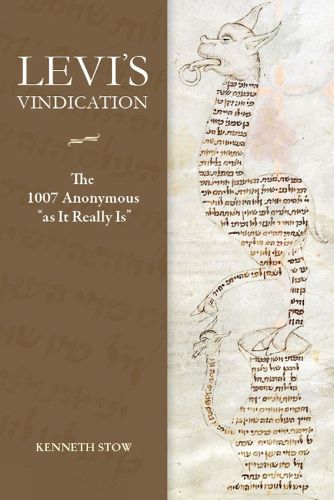Readings Newsletter
Become a Readings Member to make your shopping experience even easier.
Sign in or sign up for free!
You’re not far away from qualifying for FREE standard shipping within Australia
You’ve qualified for FREE standard shipping within Australia
The cart is loading…






The 1007 Anonymous, an imaginative, if brief text composed in the third or early fourth decade of the thirteenth century, illustrates the proper relations between Jews, their lay rulers, and the pope. The pope, consistent in applying laws that both restricted and protected Jews, is seen as a just ruler. Kings and dukes, by contrast, were inconsistent and capricious, threatening Jewish life.
This message had to be conveyed indirectly, and the 1007’s vehicle for doing so was a fictional story of murderous attack and forced conversion known as The Terrible Event of the Year 1007. Yet, by examining the details of this story-which include a direct borrowing from The Quest of the Grail composed in 1221, and a reference to coinage that could only have been made during the early thirteenth century-reveals the actual time of the 1007’s composition was later.
Similarly, the fact that the veracity of the 1007 cannot be proven through a comparison with the earlier chronicles of Raoul Glaber and Ademar of Chabannes-as students have wrongly attempted in the past-was also demonstrated by the great French scholar Israel Levi at the turn of the twentieth century. No one paid him heed- regrettably, although he was absolutely correct. This book is therefore appropriately named Levi’s Vindication.
$9.00 standard shipping within Australia
FREE standard shipping within Australia for orders over $100.00
Express & International shipping calculated at checkout
The 1007 Anonymous, an imaginative, if brief text composed in the third or early fourth decade of the thirteenth century, illustrates the proper relations between Jews, their lay rulers, and the pope. The pope, consistent in applying laws that both restricted and protected Jews, is seen as a just ruler. Kings and dukes, by contrast, were inconsistent and capricious, threatening Jewish life.
This message had to be conveyed indirectly, and the 1007’s vehicle for doing so was a fictional story of murderous attack and forced conversion known as The Terrible Event of the Year 1007. Yet, by examining the details of this story-which include a direct borrowing from The Quest of the Grail composed in 1221, and a reference to coinage that could only have been made during the early thirteenth century-reveals the actual time of the 1007’s composition was later.
Similarly, the fact that the veracity of the 1007 cannot be proven through a comparison with the earlier chronicles of Raoul Glaber and Ademar of Chabannes-as students have wrongly attempted in the past-was also demonstrated by the great French scholar Israel Levi at the turn of the twentieth century. No one paid him heed- regrettably, although he was absolutely correct. This book is therefore appropriately named Levi’s Vindication.